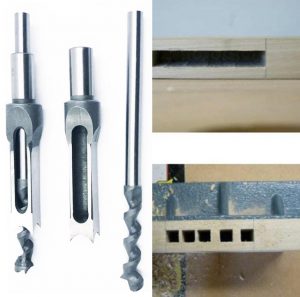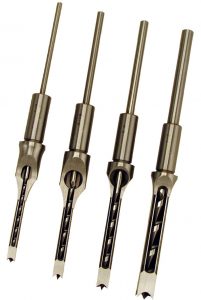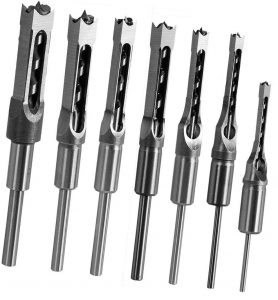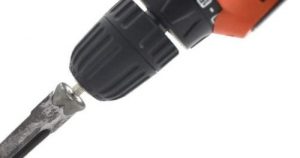Mortising drill bit: square hole hollow chisel mortising bit review
If you want to create mortise and tenon joints quickly and easily, mortising bit is a no-brainer choice. They are not expensive and may significantly reduce labor time and construction costs. Read our review to choose the best mortise drill bit for your project!
Table of Contents
Mortising Bit – What it is And How it Works
Mortising drill bits in a common meaning are tools that can drill out a square holes. In fact these bits are used with a “dedicated” mortise machine also known as a hollow chisel. You also can find mortiser square drill bit that works on a drill press (with a mortising attachment).

Basically, mortiser square drill bit is a drill bit that works inside a hollow chisel. A lot of force is needed to push the square chisel in the round hole. The cleanliness of the bottom is similar to Forstner bit. In general, square hole mortiser drill bits work well but they are tedious for large areas.
Choosing Mortise Drill Bit
I’ve purchased mortise drill bit set and use bits a lot. The 1/4″, 5/16″ and 3/8 are the most used. In those sizes, the Powermatic brand bits a pretty good. I have also had good experience with the bits sold by Woodstock. The Austrian bits made by Delta don’t seem to hold their cutting edge as well.

Powermatic chisels are super sharp, nicely ground and the edges are smooth and straight so you don’t really need to polish and sharpen them. There are minimal burrs on the chisels. The Auger bits inside the chisels are also sharp, and well fitted. Therefore, if you are looking for quality, Powermatic are the best. They produce superior results comparing to anything I have used.
High quality bits are pretty expensive and last long with proper use and sharpening. Some of my colleagues don’t like sharpening and the low price bits are preferable for them. Indeed, you can just throw the bit in a trash when it becomes dull. The 1/4″ bits heat up and break, whether they cost $30 or $90, if you abuse them too much without cooling down. Using cheaper bits lets you be less careful with them, and you may like it.

Mortise Chisel Bit Tips and Tricks
Sharpening and honing the chisel might make some difference to how the cheap mortise chisel bit perform. So, try to buy a set of cone sharpeners and work with the chisel.

Many of the carpenters I know also polish the outside faces of their square hole mortiser drill bits to reduce friction and make withdrawing them easier. I think, spraying the chisel with a little Dri-Cote won’t hurt either.
Do not overheat hollow chisel mortiser bits. All they build up heat. Let them cool from time to time. Avoid overheating and ruining them, pay attention to their temperature during use. If you overheat even the best bit, it will lose the temper and become useless.
Set up your mortise bit correctly. The auger end should extend the correct distance below the bit. Sharpen both chisel and auger bit. Do not use too large mortiser square drill bit. For example, a small Jet mortiser even with sharp drill bit set struggles with 1/2″ and 3/8″ is it’s comfortable maximum.
Choosing a Mortising Bit: Conclusions
Cheap mortising bits as they come from the store are not ready for use. If you want them to work well they need to be sharpened and polished on the outside of the chisels. It doesn’t take a lot of time but saves much efforts later. Expensive tools are ready-to-use and work better, but you still need to be careful and do not let them overheat.
My advices is to buy cheap bits if you have a good floor stand mortiser. Good powerful and sturdy machine will deal even with a roughly machined chisel. Cheap bits are more cost effective and you don’t have to worry too much about.
If you use drill press with mortising attachment, buy the best bits or you can afford. High quality bits facilitate the work of the equipment. You will need to brace the table and take a good deal of pressure so it will be a workout.
Posted on Categories Drill Bits, Mortising